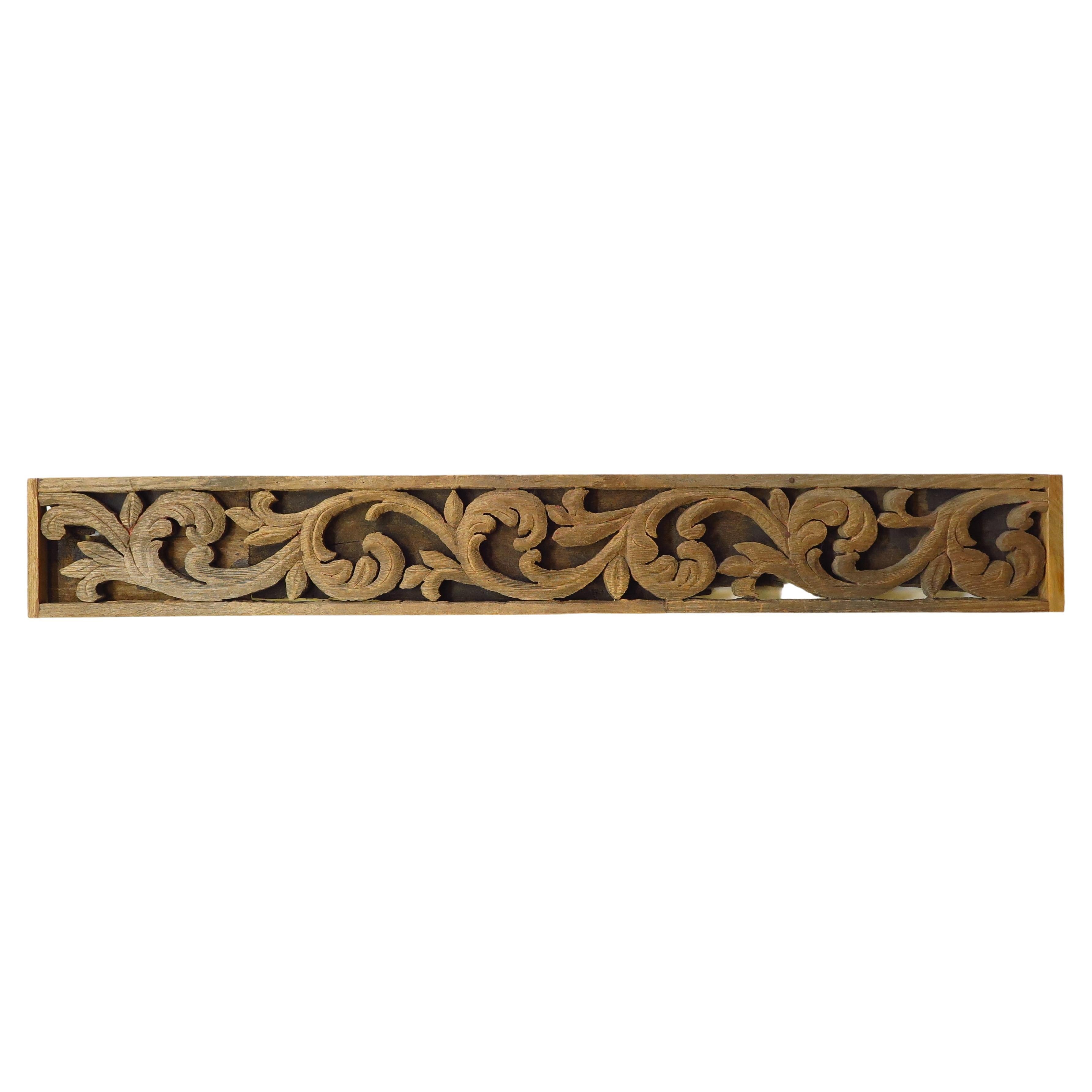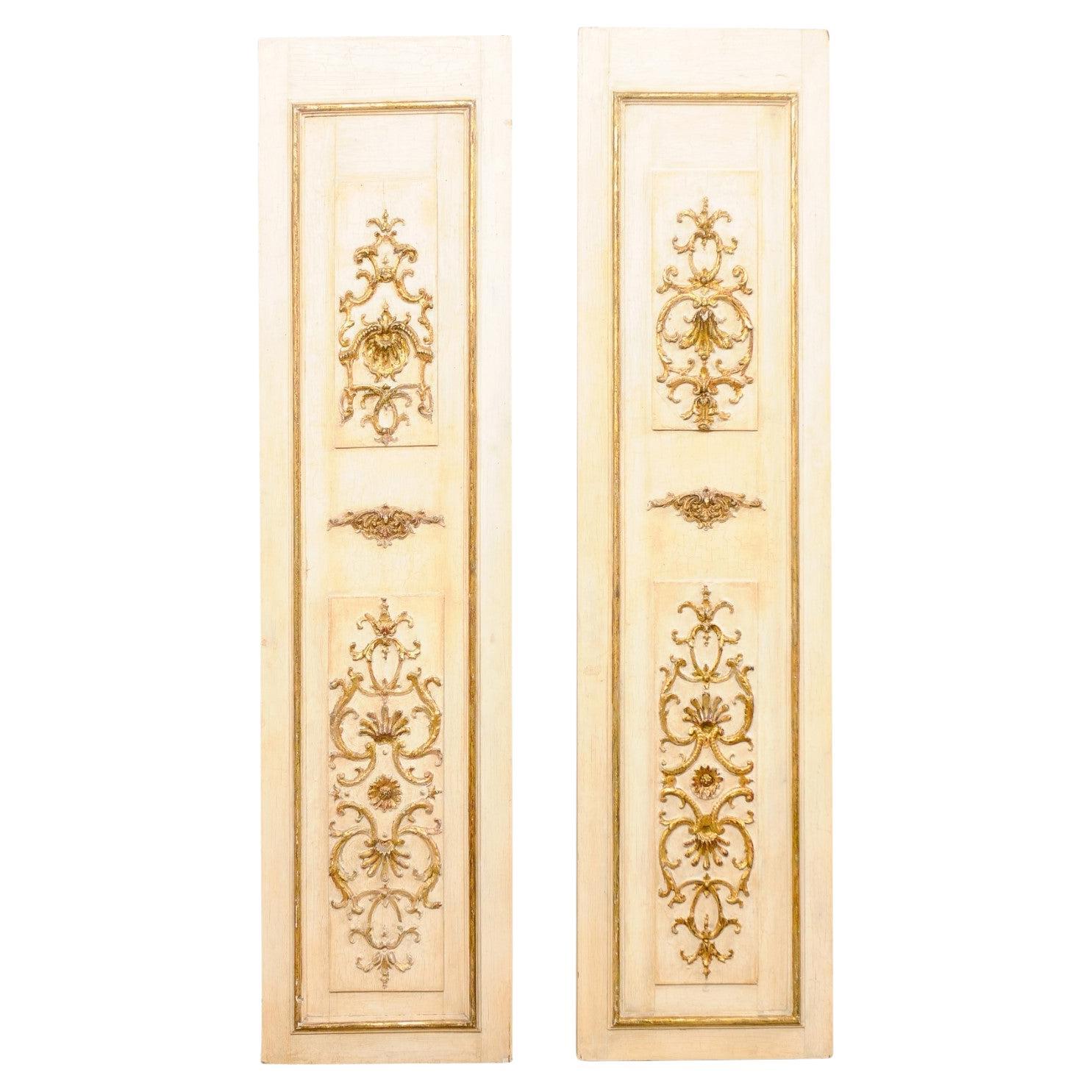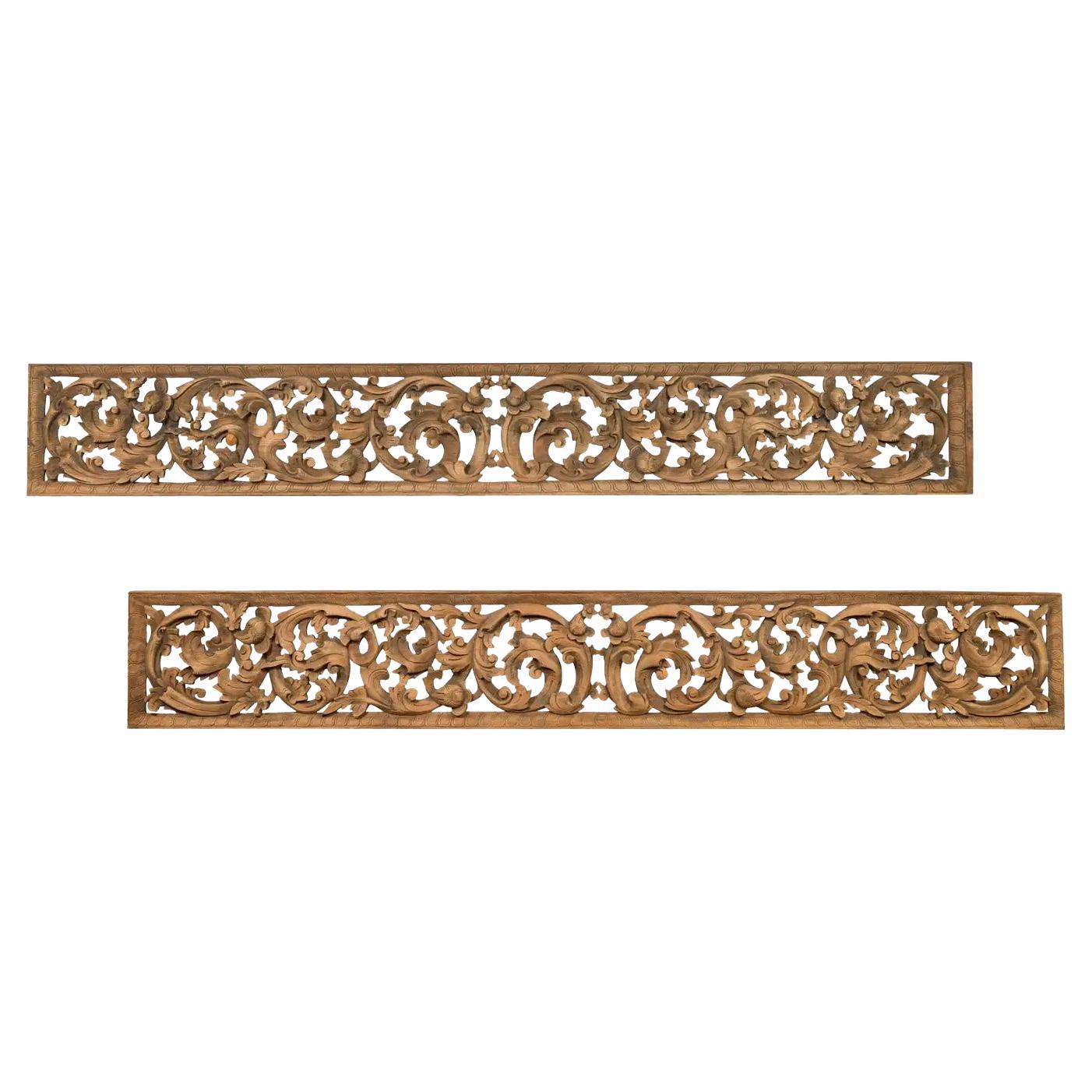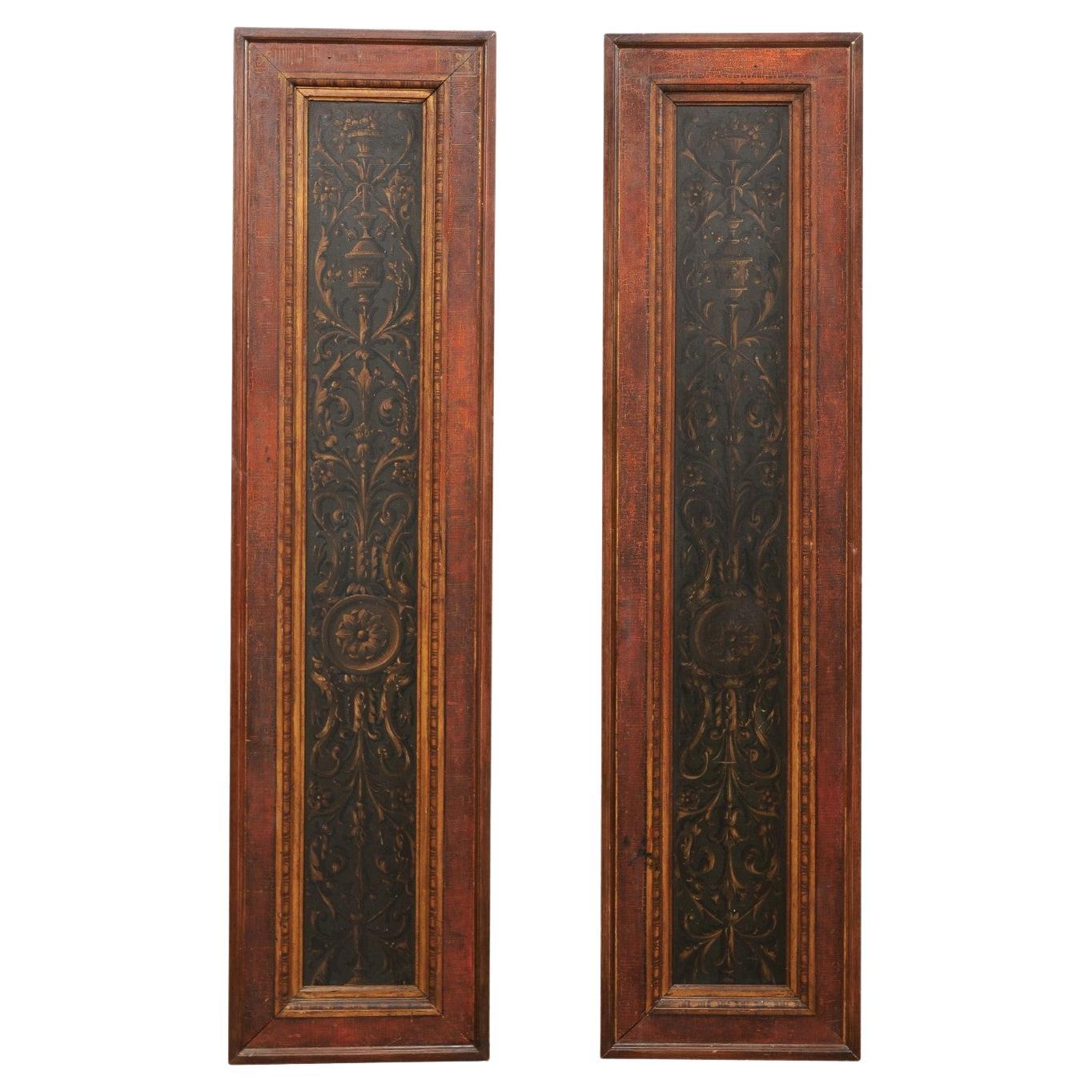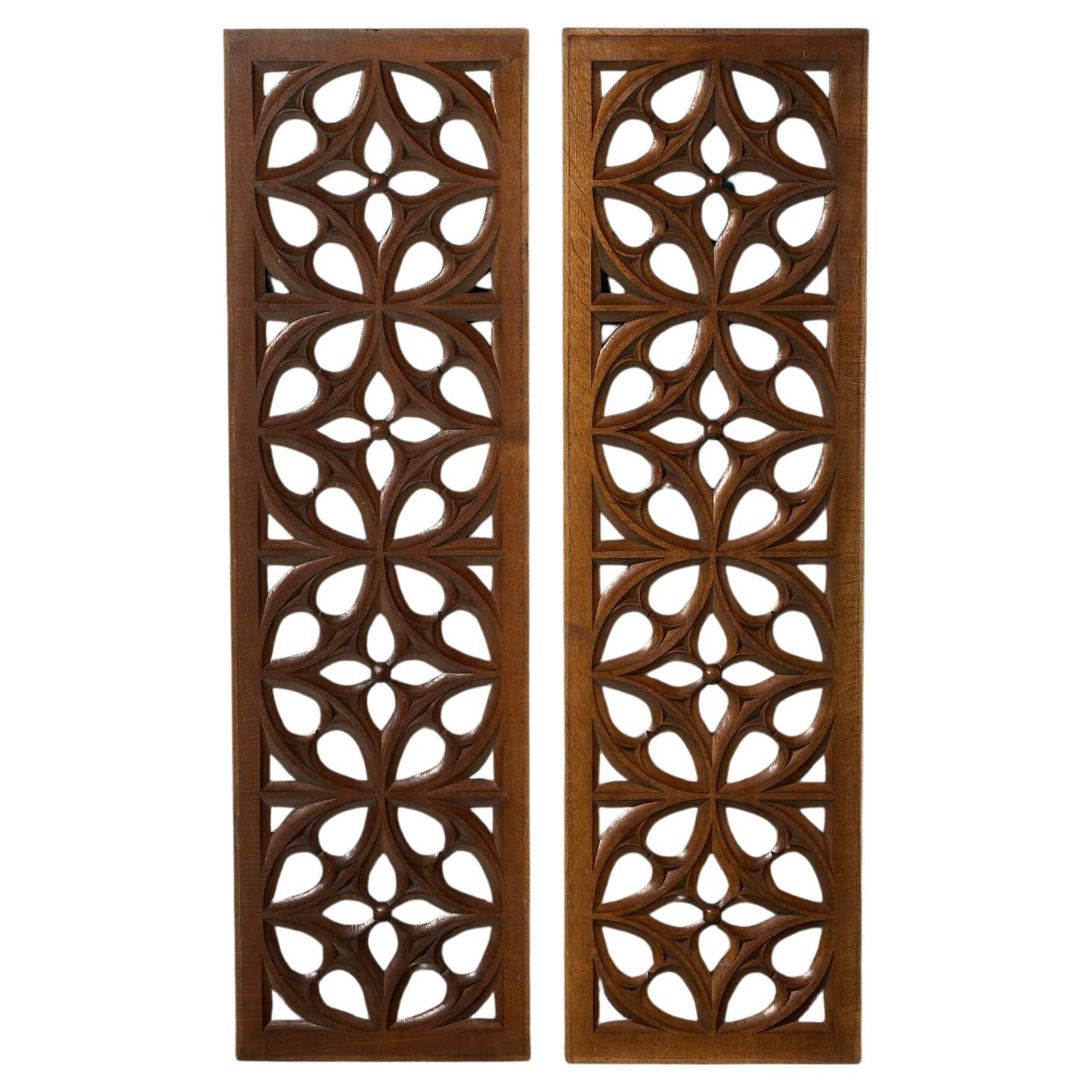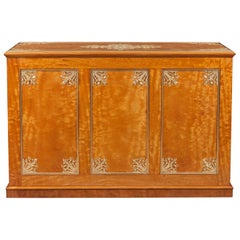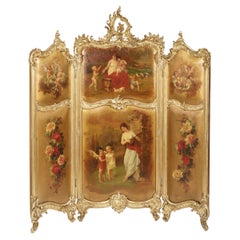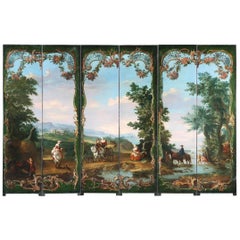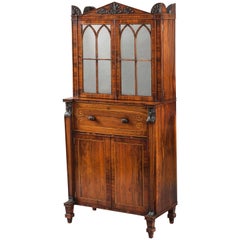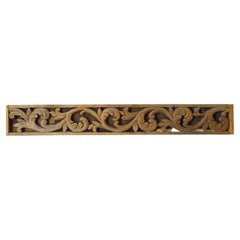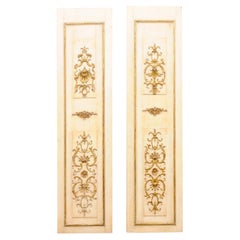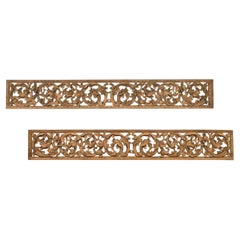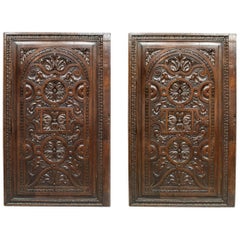Items Similar to 19th Century, Monumental Carved Boiserie Panels from Lartington Hall
Want more images or videos?
Request additional images or videos from the seller
1 of 17
19th Century, Monumental Carved Boiserie Panels from Lartington Hall
$523,290.91per set
£385,000per set
€450,758.08per set
CA$732,985.61per set
A$804,342.08per set
CHF 416,455.84per set
MX$9,628,631.24per set
NOK 5,224,856.69per set
SEK 4,915,584.44per set
DKK 3,366,958.37per set
About the Item
The Lartington hall carved Boiserie panels
by Signor Anton Leone Bulletti.
A highly important suite of eight carved and patinated wood panels commissioned by Monsignor Thomas Edward Witham for the Grand Foyer of Lartington Hall, County Durham.
Each panel with applied carving in high relief from American pine, of faultless execution and detail, composed of four pendant pairs, the designs of which survive in the Victoria & Albert Museum. The designs showcased within a patinated carved stiff-leaf border derived from the Temple of Athena Polias, each highly carved panel in sharp contrast to a cream-coloured background. While previously compared with the work of Giuseppe Maria Bonzanigo, contemporary accounts correctly identify the inspiration as Michelangelo’s designs for the ceiling in the Laurentian Library completed under the patronage of the Medici Pope Clement VII (from The Builder, 1863).
The first pair illustrating Ceres within a temple. The Roman Goddess of Harvest presented alongside her wheat sheaf and holding a sickle; surrounded by a plethora of foliate arabesques cascading all around her.
Another pair centred around the dedicatory message to the patron reading “Mæcenati¬ Suo / Idibus / Decembris 1864” (To my Generous Patron, on the Ides of December 1864), and another inscription reading “addictissimus” (very dedicated), reflecting the devotion and respect the carver held for Monsignor Witham. Both Latin cartouches equally surrounded by foliate arabesques, flora, fauna, a helmeted maiden, and a crowned angel.
The third pair inspired by the fantastical Flemish grotesque tradition popularised by Cornelis Huys in the fifteenth century. At the centre, a roundel depicting the goddess Nike, also known as the Winged Victory, holding an olive branch and a star, as she vanquishes the malicious creatures surrounding her, including two winged figures below, and a mask in the auricular style at the apex.
The final pair once again a triumph of woodcarving, dominated by a cascading fountain, each ripple and wave delicately hand carved. Two satyrs dancing among fish, snails, and salamanders, happily consuming from the grapevine reflecting a celebratory and bacchanalian theme. The heads above representing the Four Winds as they maintain order over the natural world below.
Anglo-Italian, dated 1864.
Dimensions (each panel): H: 114 in / 290 cm W: 35 in / 89 cm
Provenance:
Commissioned by Monsignor Thomas Edward Witham, Lartington Hall, County Durham, from the Artist; thence by descent to his grandnephew Francis Silvertop of Minsteracres
[…]; Private Collection of Sir William Whitfield, St Helen Hall, Auckland, since 1970s
His Sale; March 2020
Private collection, UK, acquired at the above sale, to present
Anton Leone Bulletti
Anton Leone Bulletti (c.1824-1885) was a Tuscan carver who spent the majority of his working life in England. Initially working in Florence, he was invited by the Duke of Northumberland in 1855 to come to Alnwick Castle and design its decorative furnishings (fig. ). Rather than shipping the completed carvings from Italy, Bulletti saw an opportunity to create a school focused on Italian carving at Alnwick. With Signor Bulletti at its helm, the carving school and studio was able to teach local craftsmen from London, Newcastle, Sunderland, Edinburgh and Glasgow the intricate style of Italian carving.
The work at Alnwick was incredibly time-consuming, even with a team of British craftsmen at his disposal. Upon completing the work for the Duke of Northumberland in 1860, Bulletti set up a studio in Newcastle where he practised and taught as an artist, designer, gilder, sculptor and woodcarver, until 1878.
One of this first major commissions was in 1863 for the decorative works at Lartington Hall, which are described in greater detail below. Bulletti left Newcastle for London in 1879, where he became chief instructor at the newly founded School of Art Wood-Carving in South Kensington. He retired in 1882.
Lartington Hall
Built for Francis Appleby in the early 17th century, Lartington Hall was erected on the site of a previous Tudor house. It has the distinction of mostly being passed down the female line, which makes it quite difficult to follow the line of succession. When Frances Appleby died in 1663 he was succeeded by his daughter Margaret who was married to Thomas Mairs of Hardwick Hall. Thomas was responsible for building the Georgian extension to the house in about 1750, moving the main entrance to this new wing, and adding a chapel.
By 1811, the house had passed to Henry Thomas Silvertop, who changed his name to Witham. A keen geologist, he built a museum designed by Ignatius Bonomi on the north corner of the hall to house his collection of fossils, along with his collection of over 3,000 books and paintings
In 1847, Henry’s fourth son and successor, the Rt Rev Monsignor Thomas Witham inherited Lartington. In 1861, he asked Joseph Hansom (of hansom cab fame) to design the porte cochere on the south side of the building as well as an impressive corridor from this entrance to the ballroom (formerly the museum). It is for this grand foyer that Witham commissioned Bulletti to execute wood carvings, which were exhibited in the Central Exchange News Room at Newcastle before being installed in 1864.
Thomas, who enjoyed a busy social life, kept a good wine cellar and was a generous supporter of the village and its school, lived in the hall until his death in 1897, aged 91, when the estate passed to his grandnephew Francis Silvertop of Minsteracres. Death duties forced its sale to a David Magnus Spence, and then in 1918 it was sold again, for £66,580, to Norman Field, heir to an American department store chain, and his wife Olive. By May 1918, the Bulletti carvings are described as “taken down” and “leaning against the wall” perhaps suggesting Norman Field intended to sell them.
Lartington Hall was turned over to the Red Cross during the second world war, and returned to the Field family afterwards, where his widow lived until her death in 1973.
- Dimensions:Height: 114.5 in (290.83 cm)Width: 35.5 in (90.17 cm)Depth: 5 in (12.7 cm)
- Sold As:Set of 8
- Style:Renaissance Revival (Of the Period)
- Materials and Techniques:
- Place of Origin:
- Period:
- Date of Manufacture:1864
- Condition:Repaired: Each item has undergone careful inspection and restoration by a conservation specialist in order to guarantee the original quality and integrity of the object. Wear consistent with age and use.
- Seller Location:London, GB
- Reference Number:Seller: 94311stDibs: LU954730121622
About the Seller
5.0
Recognized Seller
These prestigious sellers are industry leaders and represent the highest echelon for item quality and design.
Established in 1964
1stDibs seller since 2012
54 sales on 1stDibs
Typical response time: <1 hour
Associations
The British Antique Dealers' AssociationLAPADA - The Association of Arts & Antiques Dealers
- ShippingRetrieving quote...Shipping from: London, United Kingdom
- Return Policy
Authenticity Guarantee
In the unlikely event there’s an issue with an item’s authenticity, contact us within 1 year for a full refund. DetailsMoney-Back Guarantee
If your item is not as described, is damaged in transit, or does not arrive, contact us within 7 days for a full refund. Details24-Hour Cancellation
You have a 24-hour grace period in which to reconsider your purchase, with no questions asked.Vetted Professional Sellers
Our world-class sellers must adhere to strict standards for service and quality, maintaining the integrity of our listings.Price-Match Guarantee
If you find that a seller listed the same item for a lower price elsewhere, we’ll match it.Trusted Global Delivery
Our best-in-class carrier network provides specialized shipping options worldwide, including custom delivery.More From This Seller
View AllEnglish 19th Century Satinwood and Ormolu Folio Cabinet with Expandable Easel
Located in London, GB
The Nevill Holt Hall Folio Cabinet
Of free standing form, constructed in satinwood, extensively adorned with engraved brass strapwork, carrying handles to the sides, the initials 'C...
Category
Antique 19th Century English Victorian Cabinets
Materials
Brass
19th Century 3-Fold Screen with Vernis Martin Panels in the Louis XV Style
By William-Adolphe Bouguereau
Located in London, GB
A three-fold Vernis Martin screen
In the Louis XV Manner
The frame constructed from carved and gilded wood in the Rococo manner, the triptych Vernis Martin panels depicting idyll...
Category
Antique 19th Century French Louis XV Screens and Room Dividers
Materials
Giltwood, Paint
18th Century Painted Six Panelled Screen Depicting an European Landscape
Located in London, GB
A six panelled screen of the late Baroque period
Oil on canvas, depicting a panoramic view of a Capriccio north European landscape, perhaps Schlesweig-Holstein, with distant views of the sea, the ruined castles, peasants, and a lady of quality mounted, within a running arched canopy...
Category
Antique 18th Century German Baroque Paintings
Materials
Canvas, Paint
English Regency Period Secrétaire Cabinet with Egyptian Motifs
By George Oakley
Located in London, GB
A secrétaire cabinet of the Regency period
Firmly attributed to George Oakley.
Constructed in a finely faded and patinated goncalo alvez, having holly and purple heart stringing;...
Category
Antique 19th Century English Regency Cabinets
Materials
Purpleheart, Satinwood, Holly
English 19th Century Carved Satinwood Cabinet
Located in London, GB
A magnificently carved display cabinet of exhibition quality.
The maker has chosen to use a richly grained satinwood and executed the carving with extraordinary fluency and precis...
Category
Antique Late 19th Century English Renaissance Revival Cabinets
Materials
Mirror, Satinwood
Exceptional 19th Century English Ormolu-Mounted Cabinet with Lacquer Panels
By Edward Holmes Baldock
Located in London, GB
An Exceptional Lacquer-Mounted Side Cabinet
In the Antiquarian Taste
Possibly Supplied by Baldock
The original marble top with thumbnail moulded edge, above the breakfront cabinet ...
Category
Antique 19th Century English Cabinets
Materials
Marble, Ormolu
You May Also Like
19th Century Carved Wood Panel
Located in New York, NY
19th Century carved wood panel with lotus bud motive. An Architectural Element from a Buddhist Monastery in Northen Thailand. A Lotus Bud representi...
Category
Antique Early 1800s Thai Other Architectural Elements
Materials
Teak
French Pair Decorative Wall Panels W/Gilt Rinceaux & Shell Accents
Located in Atlanta, GA
French pair of decorative wall panels with gilt carved accents. This pair of wall ornaments from France are comprised of both vintage and older...
Category
20th Century French Panelling
Materials
Wood
20" x 60" Indonesian Single Carved Wood Temple Panel with Scrolling Foliage
Located in Pasadena, TX
An antique 19th century Indonesian carved wooden panel from a temple entrance, with scrolling foliage. Only one of the panels in the photo is now available. Crafted in the 19th centu...
Category
Antique 19th Century Wall-mounted Sculptures
Materials
Wood
Pair of English Renaissance Style Carved Walnut Panels
Located in Queens, NY
Pair of English Renaissance style (19th Century) walnut carved wall panels (PRICED AS Pair).
Category
Antique 19th Century Renaissance Panelling
Materials
Walnut
19th Century French Pair of Decoratively Hand-Painted Wooden Wall Panels
Located in Atlanta, GA
French pair of carved-wood decorative wall panels from the 19th century. This antique pair of wall ornaments from France are each rectangular i...
Category
Antique 19th Century French Architectural Elements
Materials
Wood
Pair of Antique Decorative Oak Church Panels
Located in Wormelow, Herefordshire
This pair of antique carved oak church panels would’ve once formed part of a rood screen, separating the nave from the chancel. Dating from the late 19th c...
Category
Antique Late 19th Century Victorian Panelling
Materials
Oak
More Ways To Browse
19th Century Carved Panel
Renaissance Panel
19th Century Paintings Of Angels
Winged Victory
Antique Boiserie
Antique Wood Panelling
Antique Sunderland
Antique Salamander
Renaissance Wood Panels
Nike Goddess
Boiserie Panels
Dancing Satyr
Complete Library
Carved Boiserie
Alnwick Castle
Nike Winged Victory
Porte Cochere
Antique Boiserie
